How many times can you reload a .45 ACP case?
This is the second installment in a planned series of "How Many Times Can You Reload Load It?" articles. The .45 ACP has a reputation for case longevity that borders on mythical. "You can load it until you lose it" is just one phrase commonly used to describe the durability of this caliber. To find out, I brought a portable reloading setup to the indoor range at a local sportmens' club to load/shoot/repeat with a .45 ACP case until failure.
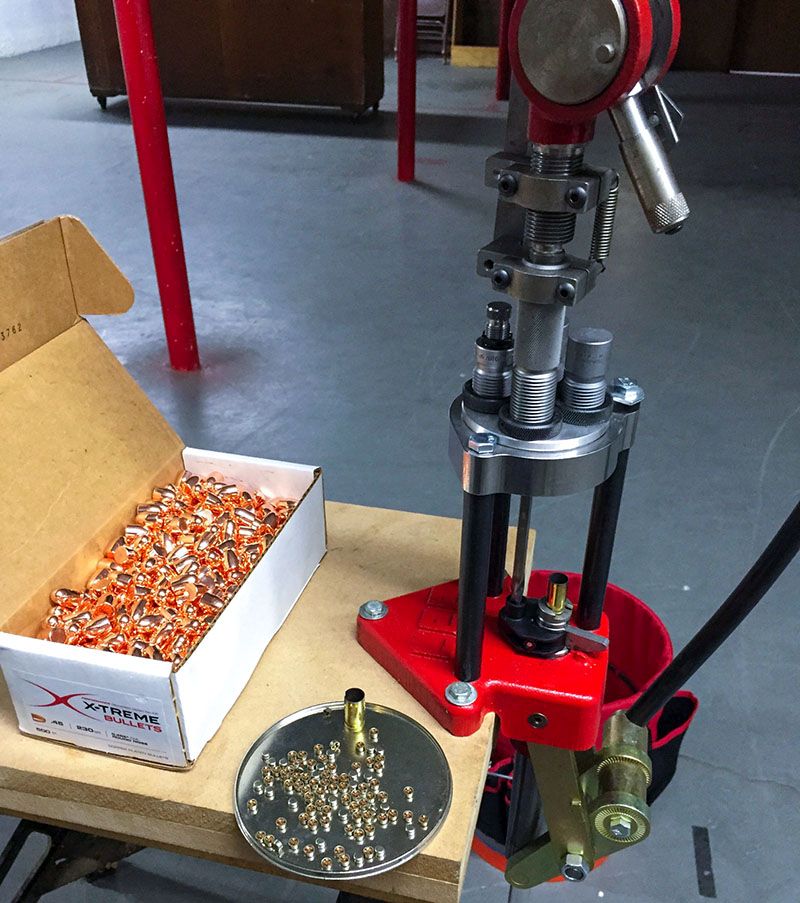
The Components and Pistol
I used brand new cases from Starline, Remington No. 2-1/2 (large pistol) primers , 230gr X-treme plated bullets loaded over 4.7 grains of Titegroup loaded to a cartridge overall length of 1.260". For this test, I intentionally selected a load near the top of the charge weight range in order to "exercise" the brass as much as possible. The rounds were fired from a Government Sized (5") S&W 1911.
The Test
In addition to testing how many times the case could be safely reloaded, I also wanted to see if and how much the case length shortened as it was fired/reloaded, to see if and how much the case mouth thickness changed as the case was fired and reloaded, and finally, what would be the ultimate failure mode for the case.
Unlike a bottleneck rifle case which lengthens upon firing/resizing, it is commonly believed that a straight-walled case that headspaces on the case mouth will shorten as it's fired. The case becomes shorter because the case mouth slams into the chamber when the cartridge headspaces, and the case head slams back against the breech face when it fires. Most reloaders believe that a combination of these two effects contribute to the reduction in case length.
After each firing, I resized the case and then measured its length. I can say, with 100% certainty that a .45 ACP case shortens as you use it (see the graph below). Before the first firing, the case length was 0.894". After the 5th firing, the case length was 0.004" shorter (at 0.890"), and by the end of the test had shortened to 0.883" - 0.011" shorter than at the start of the test.
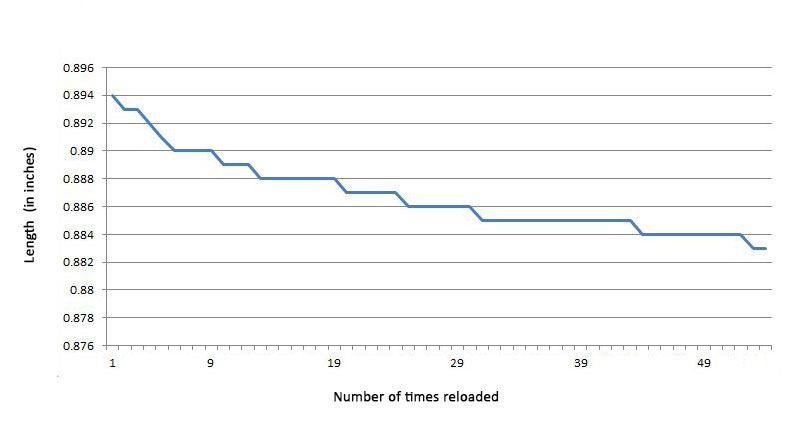
By the 20th firing, the case had been reduced to its SAAMI minimum length of 0.888". Since this was a case longevity test, I decided to continue loading and firing it. According to conventional wisdom, .45 ACP cases shorter than the minimum length will headspace on the extractor rather than one the case mouth, and while this is not optimal, the rounds will fire. While this very well may be the case, the round in my test never got short enough to headspace on the external extractor of my S&W 1911.
I have read that the case mouths of rimless straight-walled cases get thicker when they are fired and reloaded due to the case mouth banging into the chamber as the cartridge headspaces. This repeated peening is supposed to cause the case mouth to thicken. After every resizing, I used thickness micrometers to measure the case wall thickness at the same spot on the case mouth (see Figure 3). I found that the thickness of the case at the mouth did not change - even by a fraction of a thousandth - no matter how many times the case was reloaded. At the start of this test, the case wall thickness at the mouth was a hair over 0.010", and it remained rock-steady at that thickness even after dozens of firings.
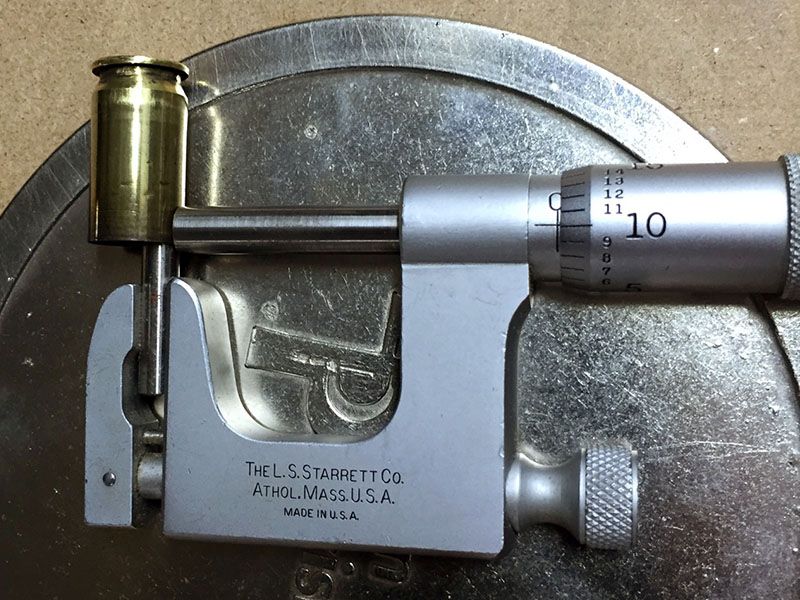
So, if the case wasn't shortening at the mouth, was it possible that the case head was getting shorter? Not only is it possible, it is exactly what happened during this test. Figure 4 shows a many-times fired case on the left next to a brand new case on the right. Look carefully at the main case body length (in other words, the distance between the case mouth and the top of the extractor groove) on both cases. That distance is the same on both cases even though the case on the left is 0.011" shorter than the new case on the right.
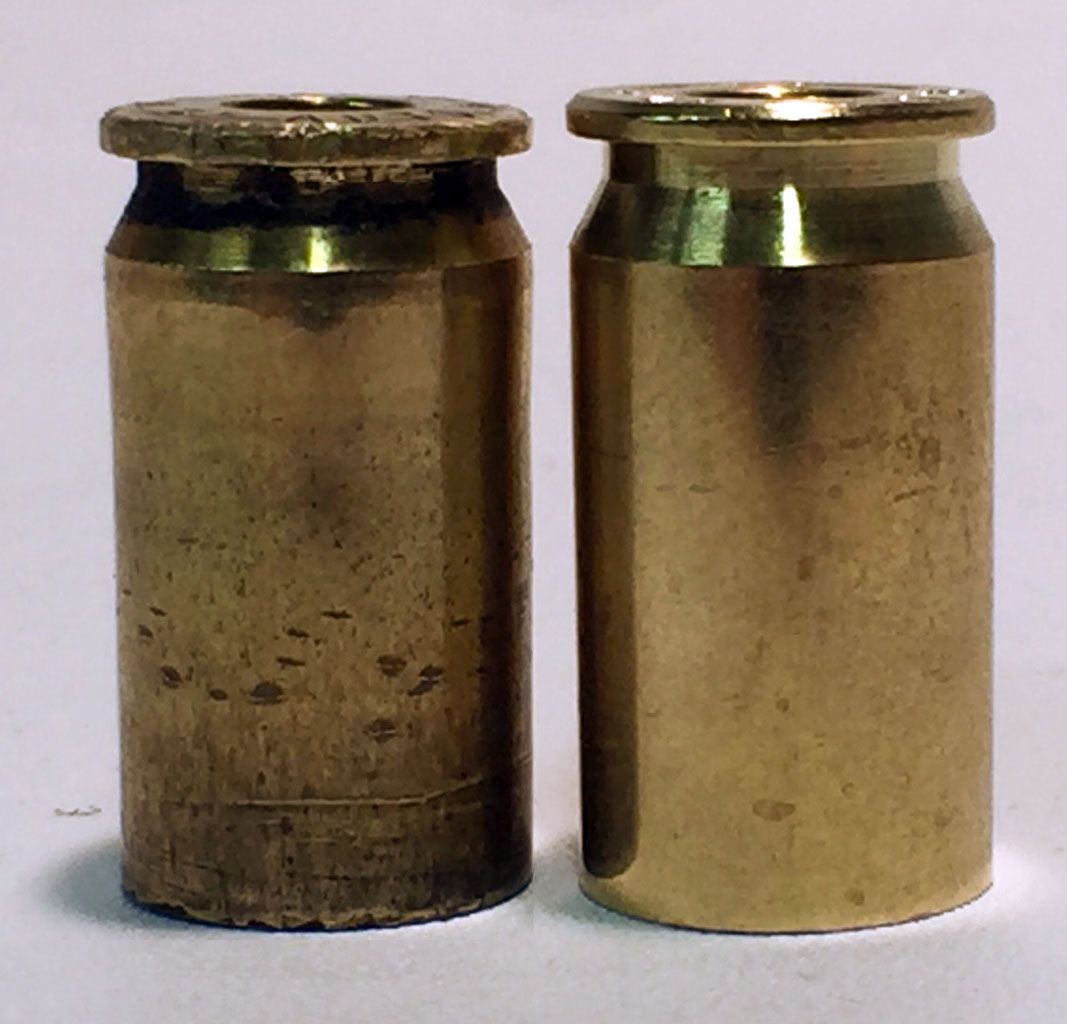
This means that all of the reduction in case length occurred between the top of the extractor groove and the case head. A close look at Figure 4 backs that up. This makes sense: The case head is driven forcefully into the breech face every time the cartridge is fired. This force is many times greater than the puny amount - provided only by the hammer through the firing pin - that acts on the case mouth during headspacing.
The case head really takes a beating. Figure 5 shows the case head of a many-times fired case compared to a fresh case. This points us toward the ultimate failure mode for this caliber.
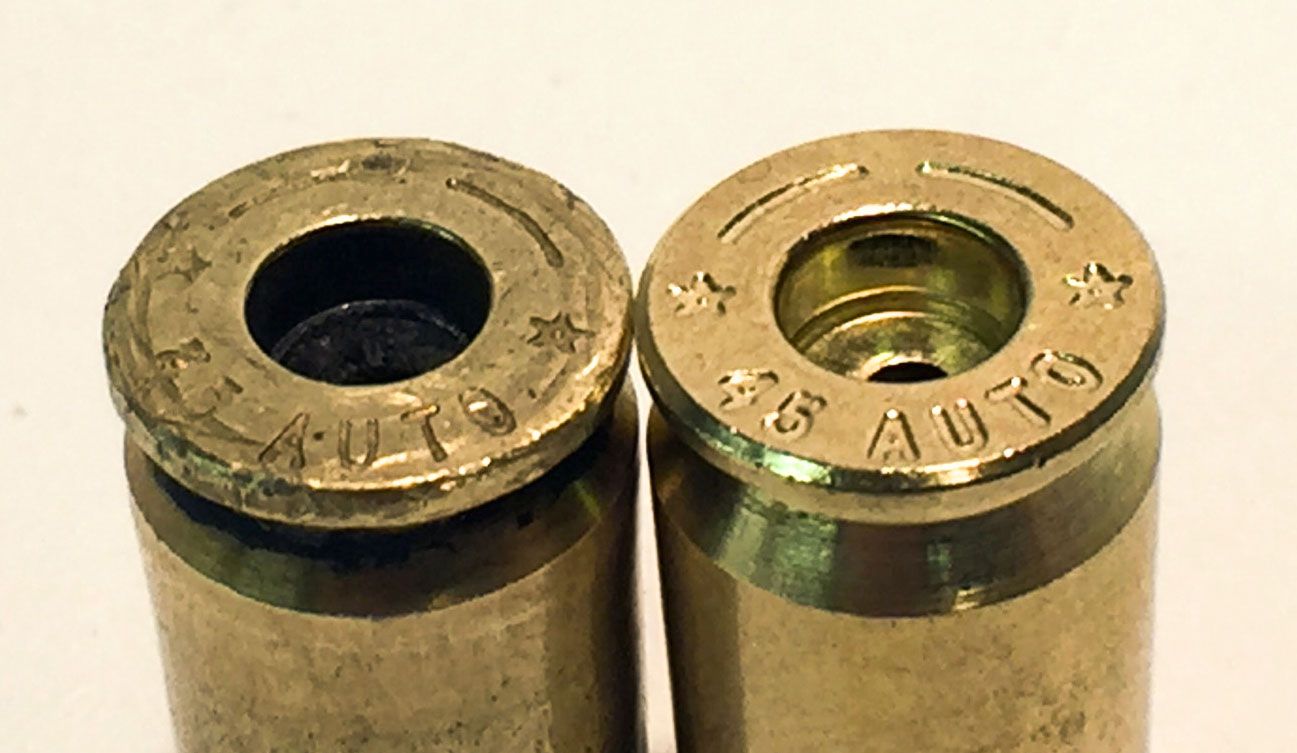
I reloaded this case 54 times, which was a couple of dozen times too many. I noticed at reload number 30 that the primer felt high. Even after a couple of quick attempts to reseat it, the primer still remained proud of the case. After firing the round and resizing the case, I measured the primer pocket depth. After the 30th firing it was 0.108" deep, as compared to 0.125" for a brand new case. Not only was the case getting smaller at the case head, but the primer pocket was getting shallower. I would have scrapped the case at that point if this was not a longevity test.
I continued to reload the case to see if I could get it to split. I was careful to "ride the slide" when I single-loaded the pistol to avoid a possible slam fire. By the 54th reloading, the case showed no signs of splitting, but the primer pocket depth had reduced to only 0.100", and the primer was too high to safely fire the round. This failure mode was a surprise - otherwise I would have been measuring the primer pocket depth on each reload rather than the case mouth thickness.
Final Thoughts
Like many good experiments, this one spawned additional questions. Such as:
- Can different brands of brass be reloaded more or less times?
- How much does the primer pocket depth shrink on each reload?
- Does small primer .45 ACP behave the same way as large primer 45 ACP?
- What effect would reducing the charge weight have on primer pocket depth changes?
I hope to be able to tackle a few of these questions in future articles. Speaking of future articles, did you notice that no information was provided about the reloading setup shown in Figure 1? That's because I'm going to write about it in detail in a future article. You read that right - I'm going to say nice things about Lee equipment.